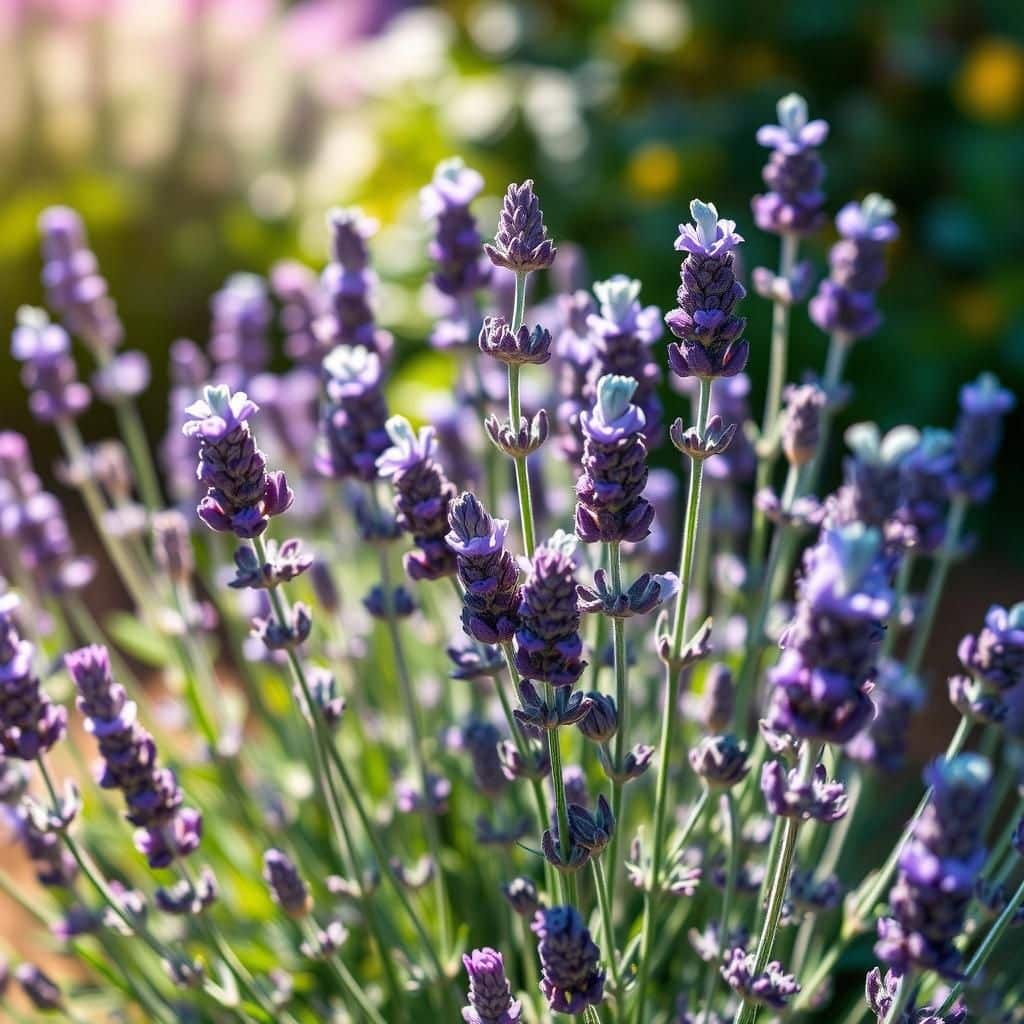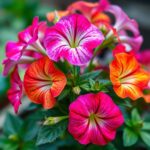Ultimate Guide to Lavender Plant Blooming Season: Tips for a Thriving Garden

Lavender is a beloved plant known for its stunning aromatic blooms and vibrant purple hues. For gardening enthusiasts, understanding the blooming season of lavender is essential for cultivating a thriving garden. In this ultimate guide, we will delve into the optimal times for planting and harvesting lavender, explore various species, and provide expert tips to ensure your lavender flourishes year after year. Whether you're a seasoned gardener or a novice, this comprehensive resource will equip you with the knowledge needed to create a breathtaking lavender display while enjoying the numerous benefits this remarkable plant offers.
Understanding the Lavender Plant Blooming Season
The lavender plant typically blooms during the summer months, with the peak blooming season generally occurring from late June to early August, depending on the climate and region in which it is grown. The blooming period can be influenced by factors such as temperature, soil conditions, and water availability. During this time, the plants produce vibrant purple flowers that not only attract pollinators like bees but also fill the air with their characteristic fragrance. The flowers can be harvested for various uses, including essential oils and culinary applications, making the blooming season a crucial time for those cultivating lavender.
Factors Affecting Blooming Time
The blooming time of lavender plants can be influenced by several factors, including climate, cultivar, and growing conditions. In warmer regions, lavender may bloom earlier than in cooler areas. Additionally, different cultivars of lavender, such as English, French, and Spanish, may have varied blooming cycles. Soil quality and nutrients also play a significant role; well-drained, nutrient-rich soils tend to promote vibrant blooms, while poor soil can delay flowering. Finally, adequate sunlight is essential, as lavender generally requires full sun to thrive and produce flowers on schedule.
Peak Blooming Months
Typically, the peak blooming months for lavender are from late June through early August, though this can vary based on the specific type of lavender and the local climate. During this period, gardeners and lavender lovers can expect to see a spectacular display of purple blooms, which are often at their most vibrant and fragrant. It’s important to monitor the weather as well since late frost or unexpected heatwaves can affect the blooming schedule. Those looking to enjoy the picturesque scenery should plan visits or harvests around these summertime months for the best experience.
Care Techniques for Bloom Enhancement
To enhance the blooming of lavender plants, proper care techniques are vital. This includes ensuring that the plants receive plenty of sunlight—a minimum of 6 to 8 hours per day is ideal. Additionally, proper watering is crucial; lavender plants are drought-resistant but do require sufficient moisture during the early growth stages. Pruning the plants after flowering can also promote better bloom production in subsequent years by keeping the plants healthy and preventing overcrowding. Regular feeding with a low-nitrogen fertilizer can help to improve flower quality, providing the essential nutrients they need without encouraging excessive foliage growth.
See also:
Best Practices for Harvesting Lavender
The best time for harvesting lavender is generally when the flowers are just beginning to open, typically in early to mid-summer during the peak bloom period. At this time, the flowers are at their most aromatic and can be used for various products such as essential oils, sachets, and culinary dishes. It’s important to harvest in the early morning or late afternoon when the temperature is cooler to preserve the oils and fragrance. Cutting the stems with sharp garden shears at an angle will allow for better hydration post-harvest. Once cut, the flowers should be dried in a shaded area to prevent color fading and maintain their quality.
Table of Common Lavender Varieties and Their Blooming Times
| Lavender Variety | Blooming Time |
|---|---|
| English Lavender | Late June to Early August |
| French Lavender | June to September |
| Spanish Lavender | April to June |
| Munstead Lavender | Early July |
| Hidcote Lavender | Late June to July |
Essential Factors for Optimizing Lavender Blooming
To optimize the blooming of your lavender plants, understanding several essential factors is crucial. This includes adequate sunlight, proper soil conditions, and carefully timed water management. Lavender thrives best in full sun, receiving at least 6-8 hours of sunlight daily, which stimulates its growth and flowering. The soil should be well-draining, preferably sandy or rocky, with a pH level of 6.0 to 8.0 to prevent root rot. Furthermore, watering should be done sparingly; overwatering can lead to poor blooming since lavender prefers drier conditions. By paying attention to these crucial elements, you increase the chances of a lush, vibrant bloom during the growing season.
Choosing the Right Lavender Variety
Selecting the appropriate lavender variety is vital for successful blooming. There are several types, such as English lavender (Lavandula angustifolia), known for its aromatic blooms and adaptability to a range of climates, and French lavender (Lavandula dentata), which tends to bloom earlier but can be less hardy. Researching the specific needs and characteristics of each type will help you choose the one that best suits your garden's environment and personal aesthetic preferences.
Soil Preparation Techniques
Proper soil preparation is foundational for any gardening success, including lavender cultivation. The soil should be amended with organic matter to improve fertility without compromising drainage. Incorporating materials like compost or gravel can enhance the soil structure, allowing for the quick drainage that lavender requires. Conducting a soil test beforehand can help you determine pH levels and nutrient content, making it easier to tailor your amendments accordingly.
Watering Practices for Healthy Blooms
Understanding effective watering practices is essential for nurturing lavender plants. Lavender is drought-tolerant and doesn't thrive on excess moisture; thus, it’s crucial to allow the top inch of soil to dry out between watering sessions. During the initial planting phase, a deep watering once a week may be necessary, but as the plants establish, they typically only need watering during prolonged dry spells. Always ensure that the roots are not sitting in water, as this could suppress blooming.
See also:
Sunlight Requirements for Optimal Growth
Lavender plants flourish best when given ample sunlight, which plays a critical role in their blooming success. Ideally, lavender should receive at least 6-8 hours of full sunlight daily. Lack of sunlight can lead to stunted growth and reduced flowering. When planning your garden, consider the placement of your lavender to ensure it’s positioned where it can soak up the sun's rays effectively throughout the day.
Pruning Techniques to Enhance Blooming
Regular pruning is essential for maintaining the health of lavender plants and promoting optimal blooming. Prune your lavender plants after their first bloom, cutting back about one-third of their height. This encourages new growth and more robust flowering in the next season. Additionally, pruning helps manage the plant's shape, preventing woodiness and ensuring that sunlight reaches more interior leaves, further supporting a vibrant bloom.
Questions from Our Readers
When does the lavender plant typically bloom?
The lavender plant typically blooms from late spring to early summer, with the peak bloom often occurring in June and July depending on the climate and variety of lavender.
How long does the blooming season last for lavender?
The blooming season for lavender usually lasts about two to three weeks, but this can vary based on weather conditions and the specific type of lavender, with some varieties blooming for a longer period.
What factors can affect the blooming season of lavender?
Factors that can influence the blooming season of lavender include temperature, soil quality, moisture levels, and the amount of sunlight the plants receive, all of which can either promote or delay the blooming process.
See also:
Can lavender bloom more than once a year?
While most lavender varieties bloom only once per year, some gardeners may experience a second bloom in late summer or early fall if the plants are well-maintained and the weather conditions are favorable.

If you want to read more articles like Ultimate Guide to Lavender Plant Blooming Season: Tips for a Thriving Garden, we recommend you check out our Landscaping category.
Leave a Reply
Related Articles